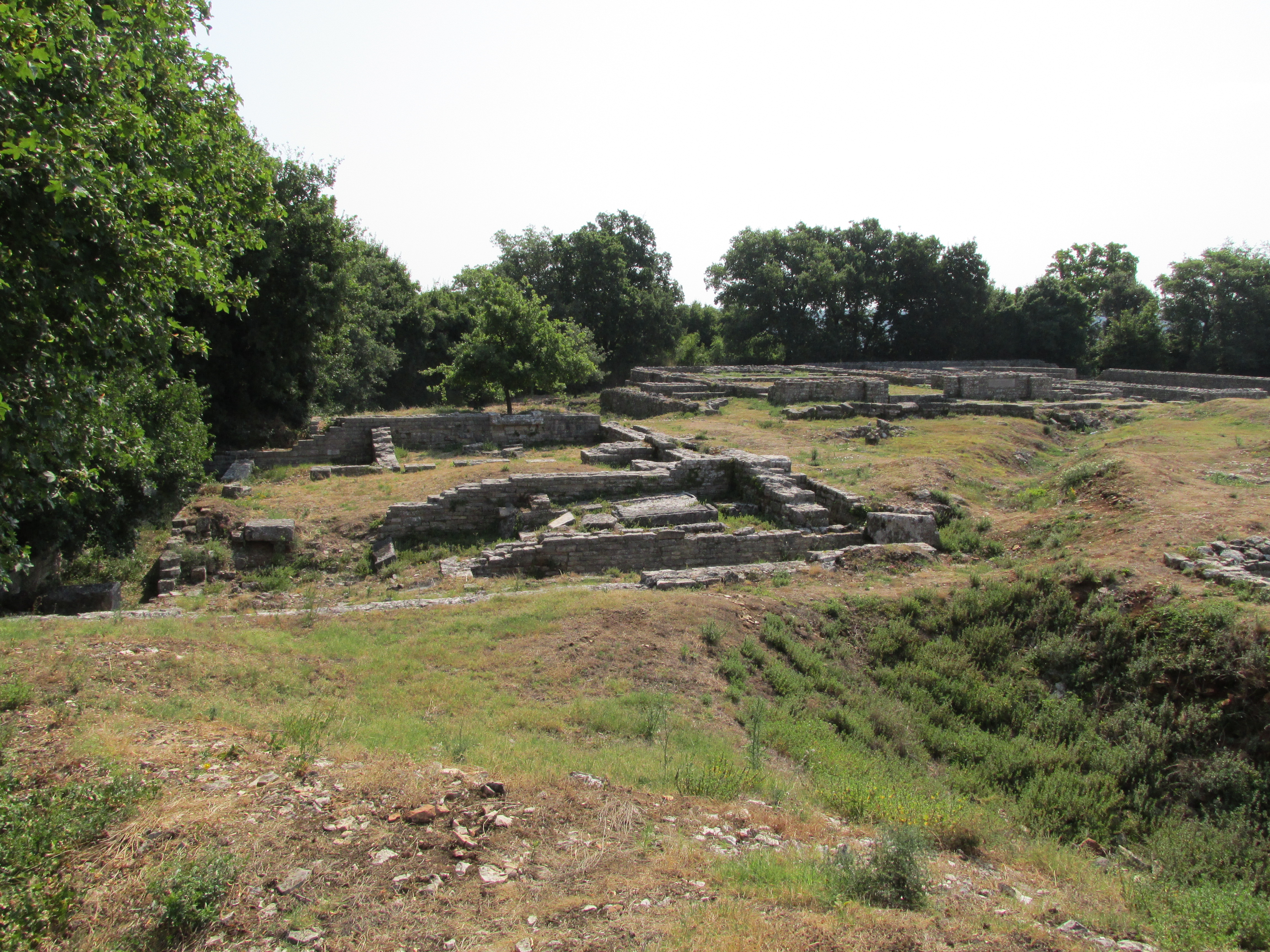
Most Recent Visit: July 2015
Quick Info:
Address:
Loc. Nezakcij, Frazione Valtura
52202, Ližnjan (Lisignano)
Hours:
9:00-12:00, 16:00-20:00
Admission: Free
The Roman settlement of Nesactium (Vizače [Istrian], Nezakcij [Croatian]) is located on the site of a pre-Roman settlement of the Istri that shows evidence of occupation dating back to the 11th century BCE. Not much seems to be written about the Istri prior to the Roman contact. The Istrian peninsula was originally brought under Roman control in 220 BCE, but following the Second Punic War and the dissent sown by Hannibal’s invasion of Italy, the Istri once again became troublesome. With more critical areas to bring back under control, the Istri were largely ignored by the Romans for a number of years following the Second Punic War. The founding of the colony of Aquilea in 181/180 BCE seems to have agitated the Istri further and galvanized them into more frequent piracy and raids into Roman and Roman-allied territory. In 178 BCE, a campaign against the Istri was launched under the command of Aulus Manlius Vulso to mixed results. The next year, before his replacement, Gaius Claudius Pulcher, arrived to take over command, Vulso set out once again against the Istri. Soon after the campaign the Romans fought a decisive battle against a hastily raised Istrian army, killing 4,000 and dispersing the rest of the army. Many important Istrians, as well as their king, Epaulo, were held up at Nesactium, which was promptly besieged by Vulso. A few days later, Pulcher arrived to take command of the army with two new legions and set about a proper siege of the settlement, which included cutting off the water supply. This act, according to Livy, terrified the Istrians and drove them to kill the women and children on the walls of the settlement, in view of the Romans, and toss their bodies down. In the ensuing chaos, the Romans were able to enter the town, causing Epaulo to kill himself rather than being taken prisoner, and the rest of the inhabitants were killed or taken prisoner, and the town was destroyed. Following the fall of Nesactium, the towns of Mutila and Faveria were taken and destroyed, effectively ending Istrian resistance against the Romans.
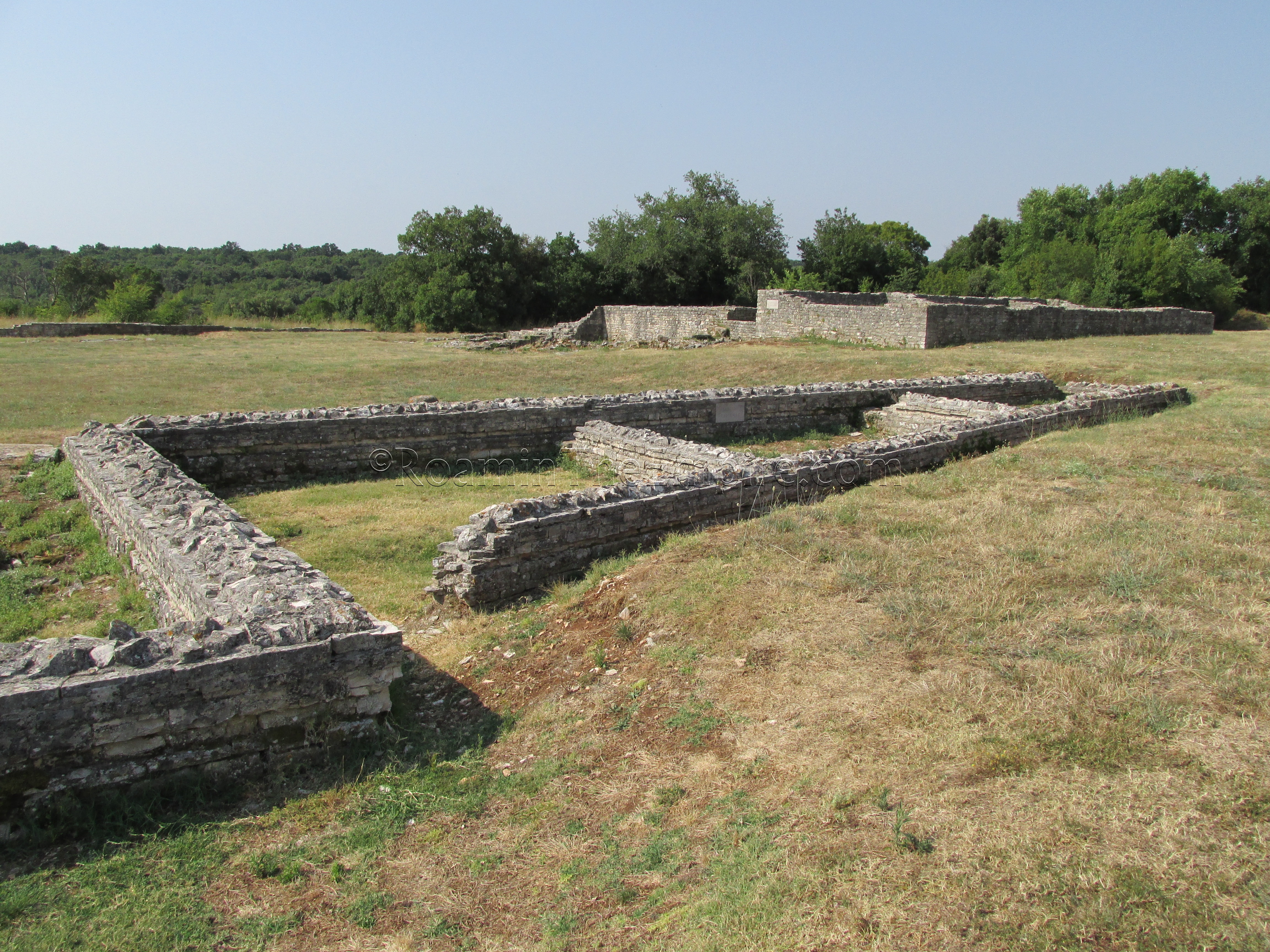
The settlement was rebuilt with typical Roman features and retained importance in the region. By the Augustan era, Nesactium had been made a praefectura of neighboring Pola, which had grown into a thriving port town. The settlement became an autonomous respublica Nesactiensium with its own aediles and duoviri in the 3rd century CE, as per an inscription found at the site. Nesactium continued to be occupied until the 6th-7th century CE, when it was destroyed and abandoned during barbarian invasions.
Getting There: Other than taking private transportation, the only way to get to Nesactium is by bus and a fair amount of walking. The site is located on a road between the towns of Muntić and Valtura, about 9 kilometers northeast of Pula. A single bus line runs from Pula to both of these towns, but, the distance from Valtura to the site is a little shorter than between Muntić and the site. Valtura is also the final destination of the bus, which makes it a little easier to determine when you need to get off, if you don’t speak much Croatian. I chose to set out for the site from Valtura as well, so I can vouch for the exact location of the bus stop there and the route to get to the site, which I cannot do for Muntić. To get to Valtura from Pula, one needs to take the route 23 (or 23a) bus from the main bus station in Pula. The fare to and from Valtura is 11 Kuna each way. While the bus has a regular schedule (which can be found here), that schedule was not very rigorously adhered to, in my experience. In fact, my return bus to Pula didn’t show up at all at the time that, to the best of my knowledge of the schedule, it should have. Though the Valtura to Pula route runs about once an hour in the early afternoon, my advice would be to shoot for no later than the 14:55 bus back, rather than to rely on the 16:05 bus, which is the last until 18:55. Some of the buses out of Pula didn’t have route numbers displayed, and the stalls at which certain buses were supposed to arrive didn’t seem to really follow the posted signage, so it did require a little inquiry of staff and bus drivers for me to actually find the bus. To their credit, though, everyone was friendly and attempted to be helpful. The bus stop in Valtura is in the main square in front of a large yellow church. For Valtura it is a 1.7 kilometer walk to the site. Around the opposite side of the church is the road, which didn’t seem to have any sort of name, to the site. There are a few branch offs, but not of the same quality as the main road, so it’s pretty easy to follow. Shortly before reaching the site, though, the road does change from paved to dirt/rock/gravel.

Nesactium, according to the Arheološki Muzej Istre website, technically has opening hours (including a mid-day break), and there is a gate blocking access to the site from the road, at the location of the Porta Polensis. After arriving before the 9:00 opening time, I decided to wait at a little bench under a tree a little ways back down the road towards Valtura (where the road changes from pavement to gravel) to see if anyone would show up. With the mid-day break scheduled in the opening hours, I figured that there would be someone there to enforce that. At about a quarter after, I surmised that no one was actually coming, and just took a well-worn path around the closed gate and over the Porta Polensis into the site. I was on site for about an hour, and no one ever came, so I gather that the site is not actually staffed (or not always staffed) and the opening hours are merely suggestions.
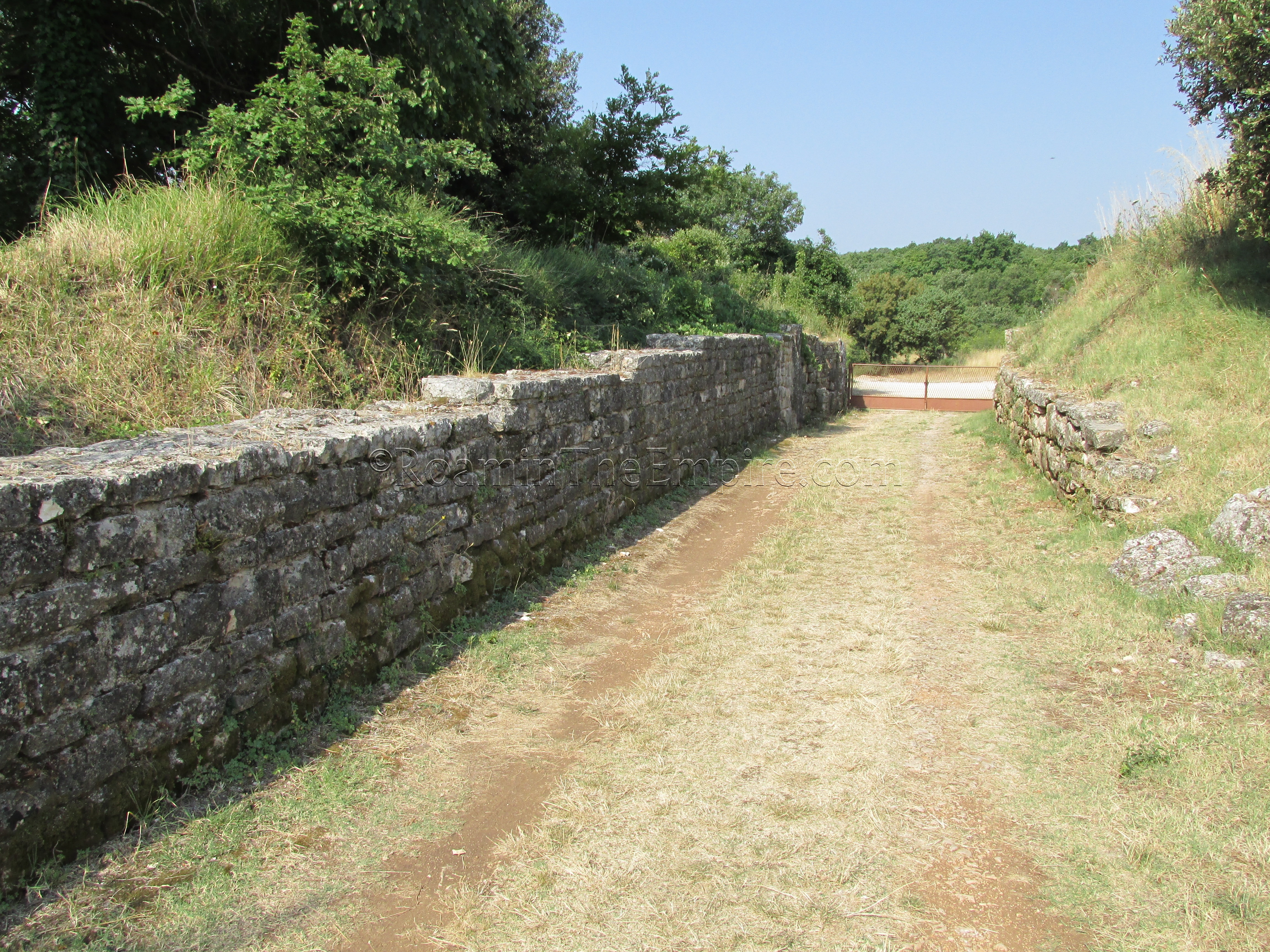
While the majority of the remains at Nesactium date to the Roman period, there are some scant remains from the pre-Roman period, as well as two Christian basilicas that have construction dating to as late as the 6th century CE.On the west side of the site, where the entrance is located, a stretch of Istrian/Roman walls are still extant, as well as both a Roman gate (the Porta Polensis which is the modern entrance into the site) and a pre-Roman gate a short distance north of the Roman gate.

The first remains encountered when entering through the Porta Polensis is the capitolium. The tripartite form of the capitolium is very apparent in the large sections of the foundations remaining. Built in the 1st or 2nd century AD, while nothing above the foundations and podium remains, the structure and fill of the podium can be seen. The site of the capitolium seems to correspond with an earlier religious structure dedicated to the local goddess Eia.

To the south of the capitolium are the remains of a structure that is identified as being residential in nature. The structure is built on the beginning of the slope, and a staircase leading down from the level of the forum down is still extant.

To the east of the capitolium is the forum area. Very little remains other than an open field, though some remnants of drainage canals, column pads, and some assorted fragments of paving stones and other building materials strewn about. East/southeast of the forum, down the slope of the hill, there were apparently two more large residential complexes found, but they are no longer uncovered. The brush and terrain discourage any investigation of that area, though a path.
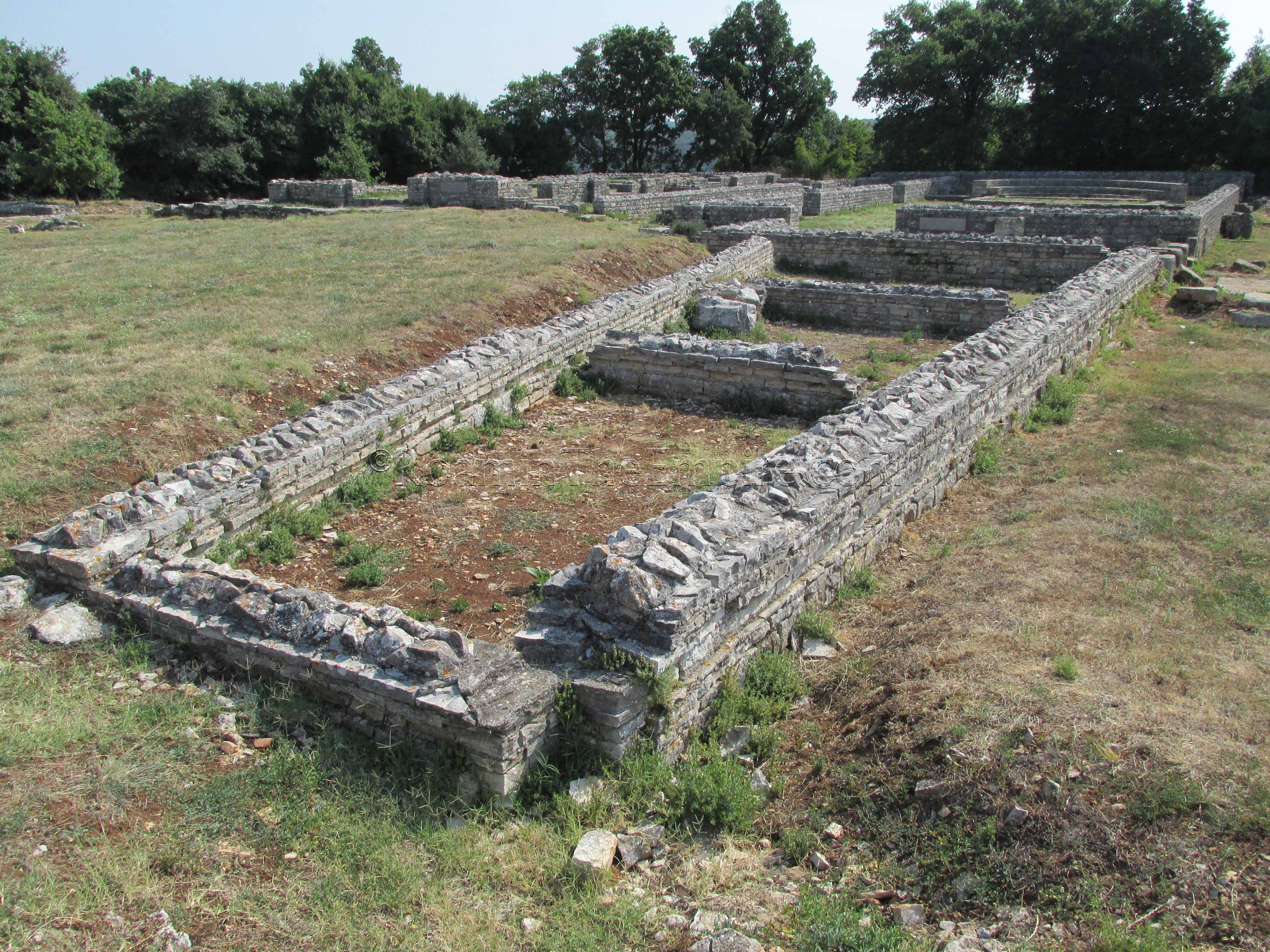
On the west end of the north side of the forum, adjacent to the capitolium are the walls of a few tabernae stalls. On the east end of the north side of the forum is the southernmost of the two early Christian basilicas; the aptly named southern basilica. Immediately north of the southern basilica is the northern basilica. The dates for these structures are not completely clear, though they seem to have existed concurrently at some point, and had later building phases dated up to the 6th century CE.
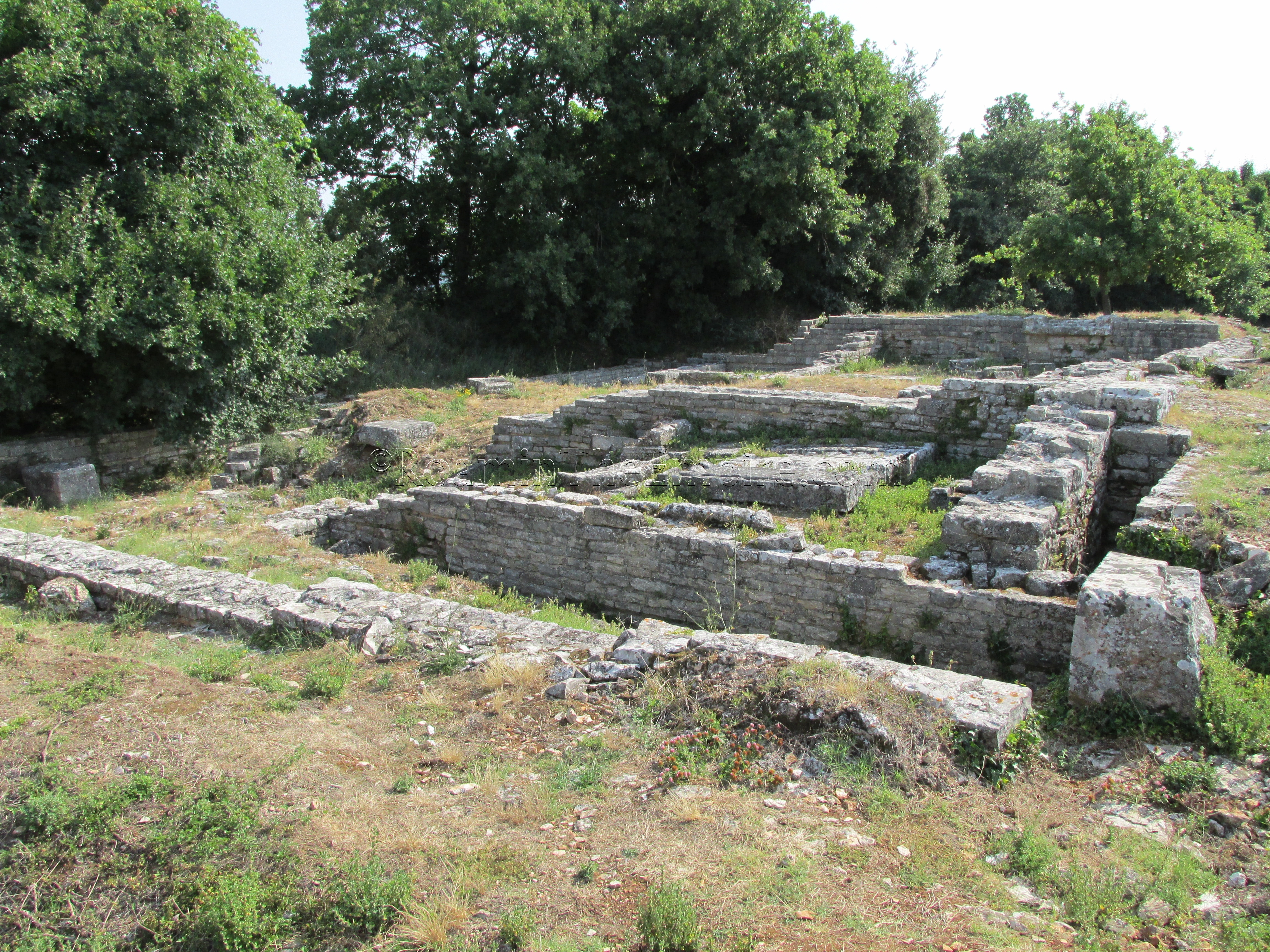
To the north and west of the northern basilica is a bathing complex. Not much remains in the way of identifiable structures within the baths such as basins or pilae to demarcate the function of space. A few water channels in the area are present, though. West of the baths is another residential complex that is now largely covered, but the tops of some walls are still visible. Aside from the earthen form of a pre-Roman wall along the western side of the settlement, within the stone walls, those structures complete the circuit of the archaeological site.

While the site is certainly interesting from a historical perspective, there isn’t really any signage explaining the remaining architecture. The only sign I did see, other than a few embedded plaques denoting the basilicas, tabernae, and capitolium, was essentially an advertisement for an augmented reality app that, as far as I can tell, is no longer functional (though it did look very interesting). Given that there’s no staff on site either, which I honestly can’t begrudge given that it’s quite out of the way and doesn’t seem to get a whole lot of traffic, it’s hard to get perspective on the site without doing research before and/or after visiting.
Most of the finds from Nesactium are housed in the Arheološki Muzej Istre in Pula, which was unfortunately closed during my visit to the area. It has apparently been closed since 2013, and is still closed as of the writing of this post. There doesn’t seem to be any timetable for it opening.
Sources:
Livy, Ab Urbe Condita, 41.11.
Scullard, H. H. A History of the Roman world: 753 to 146 BC. London: Routledge, 1980.
Stillwell, Richard, William L. MacDonald, and Marian Holland. McAllister. The Princeton Encyclopedia of Classical Sites. Princeton, NJ: Princeton U Press, 1976.
Arheološki Muzej Istre – http://www.ami-pula.hr/



